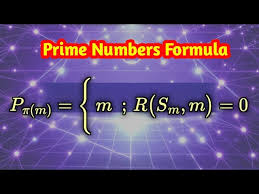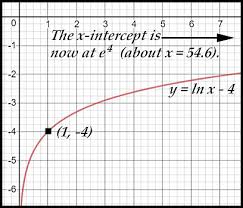Understanding the Undefined Nature of ln(0): A Deep Dive into Natural Logarithms



Chính Sách Vận Chuyển Và Đổi Trả Hàng
Miễn phí vận chuyển mọi đơn hàng từ 500K
- Phí ship mặc trong nước 50K
- Thời gian nhận hàng 2-3 ngày trong tuần
- Giao hàng hỏa tốc trong 24h
- Hoàn trả hàng trong 30 ngày nếu không hài lòng
Mô tả sản phẩm
The concept of the natural logarithm, denoted as ln(x), is fundamental in mathematics, science, and engineering. It serves as the inverse operation to the exponential function e^x, where 'e' is Euler's number, an irrational constant approximately equal to 2.71828. While ln(x) is well-defined for all positive real numbers x, a common point of confusion and a frequent query revolves around the value of ln(0). To cut directly to the chase and follow a deductive approach, the central tenet of this article is that ln(0) is mathematically undefined. This conclusion is not arbitrary but stems directly from the very definition and properties of logarithms and exponential functions. Understanding why ln(0) lacks a defined value is crucial for anyone working with these functions, as it prevents errors in calculations, misinterpretations of models, and logical fallacies in problem-solving. This article will meticulously explore the various perspectives—definitional, graphical, and limit-based—that unequivocally lead to this conclusion, shedding light on the underlying mathematical principles.
What is the Natural Logarithm (ln)?
Before delving into why ln(0) is undefined, it's essential to firmly grasp what the natural logarithm represents. The natural logarithm of a number x, written as ln(x), is the power to which 'e' must be raised to obtain x. In other words, if y = ln(x), then by definition, e^y = x. Here, 'e' is the base of the natural logarithm, just as 10 is the base for common logarithms (log_10 or simply log) and 2 is the base for binary logarithms (log_2).
The natural logarithm arises naturally in various contexts, including continuous growth and decay, compound interest, probability, entropy, and the analysis of complex systems. Its inverse relationship with the exponential function e^x makes them a powerful pair for modeling phenomena that change at a rate proportional to their current value. For instance, if a quantity grows continuously at a rate r, its value at time t can be expressed as A(t) = A_0 * e^(rt). To find the time it takes for the quantity to reach a certain value, one would typically use the natural logarithm.
Crucially, for ln(x) to be defined, x must be a positive real number. This restriction on the domain is fundamental and is the primary reason why ln(0) falls outside the realm of definable values. The subsequent sections will elaborate on why this restriction exists.
Why ln(0) is Undefined: A Definitional Approach
The most direct way to understand why ln(0) is undefined is to apply the fundamental definition of a logarithm. As established, the statement y = ln(x) is equivalent to the exponential statement e^y = x.
Now, let's substitute x = 0 into this relationship:
If ln(0) = y (assuming for a moment that such a y exists), then by definition, it must follow that e^y = 0.
The question then becomes: Is there any real number y for which e^y equals 0? Let's analyze the properties of the exponential function f(y) = e^y:
- Positive Output: For any real number
y, whether positive, negative, or zero, the value ofe^yis always strictly positive.- If
y > 0, thene^y > 1(e.g.,e^1 = e ≈ 2.718,e^2 ≈ 7.389). - If
y = 0, thene^0 = 1. - If
y < 0, thene^yis a positive fraction between 0 and 1 (e.g.,e^(-1) = 1/e ≈ 0.368,e^(-2) = 1/e^2 ≈ 0.135).
- If
- Never Zero: The graph of
y = e^xapproaches the x-axis (wherey = 0) asxapproaches negative infinity, but it never actually touches or crosses the x-axis. It is always above the x-axis.
Because e^y can never be equal to 0 for any real value of y, there is no real number y that satisfies the equation e^y = 0. Consequently, this means there is no real number y that can be the result of ln(0). Therefore, by its very definition, ln(0) is undefined in the domain of real numbers.
Visualizing the Problem: The Graph of y = ln(x)
A powerful way to understand the properties of a function, including its domain and behavior, is by examining its graph. The graph of y = ln(x) provides a clear visual confirmation of why ln(0) is undefined.
Consider the typical shape of the natural logarithm function y = ln(x):
- It passes through the point
(1, 0), becauseln(1) = 0(sincee^0 = 1). - It is an ever-increasing function, meaning as
xincreases,y = ln(x)also increases. - It extends indefinitely to the right, meaning
ln(x)can take on any positive real value asxbecomes sufficiently large.
Now, let's focus on its behavior as x approaches 0 from the positive side (since logarithms are not defined for negative numbers, as e^y is always positive). As x gets closer and closer to 0 (e.g., 0.1, 0.01, 0.001, ...), the value of ln(x) becomes increasingly negative.
ln(0.1) ≈ -2.30ln(0.01) ≈ -4.61ln(0.001) ≈ -6.91
As x approaches 0, the graph of y = ln(x) plunges downwards, approaching negative infinity. This behavior indicates the presence of a vertical asymptote at x = 0 (the y-axis). An asymptote is a line that the graph of a function approaches but never actually touches. In the case of y = ln(x), the y-axis itself acts as a barrier that the function approaches but never reaches or crosses.
Because the graph never intersects the y-axis, there is no corresponding y value for x = 0. This graphical representation reinforces the conclusion that ln(0) is undefined; the function simply does not exist at that specific point.
The Limit Perspective: Approaching Zero from the Right
In calculus, the concept of a limit allows us to describe the behavior of a function as its input approaches a certain value, even if the function is not defined at that specific point. Applying limits to ln(x) as x approaches 0 provides further insight into its undefined nature.
Since the domain of ln(x) is restricted to positive numbers, we can only approach 0 from the positive side. This is denoted as x -> 0+.
Consider the limit of ln(x) as x approaches 0 from the right:
lim (x -> 0+) ln(x) = -∞
This limit statement formally describes the behavior we observed from the graph: as x gets infinitesimally close to 0 from values greater than 0, the value of ln(x) decreases without bound, heading towards negative infinity. The fact that the limit is negative infinity, rather than a finite number, means that the function does not converge to a specific value at x = 0. Therefore, the function is undefined at that point.
It's important to note that we cannot evaluate the limit as x approaches 0 from the left (x -> 0-), because ln(x) is not defined for negative numbers. The domain restriction applies, meaning the function simply doesn't exist for x < 0. This one-sided limit, which results in infinity, is another robust argument for ln(0) being undefined in the real number system.
Domain of the Natural Logarithm
The concept of a function's domain is paramount in mathematics. The domain defines the set of all possible input values (x-values) for which the function is defined and produces a real output. For the natural logarithm function, y = ln(x), the domain is explicitly stated as:
Domain: x > 0
This means that x must be strictly greater than zero. It cannot be zero, and it cannot be a negative number.
Why this restriction? It directly ties back to the exponential function e^y = x. As discussed, e^y can never produce a zero or negative result for any real y. Therefore, the input x for ln(x) must inherently be positive. When we attempt to evaluate ln(0), we are trying to input a value that falls outside the permissible domain of the function. Just as division by zero is undefined because it violates the definition of division, taking the logarithm of zero is undefined because it violates the fundamental definition and properties of exponential functions and their inverses.
Understanding and respecting the domain of mathematical functions is critical for accurate calculations and meaningful interpretations. Ignoring domain restrictions can lead to mathematical errors and incorrect conclusions in scientific and engineering applications.
Common Misconceptions and Where They Arise
Despite the clear mathematical reasoning, ln(0) being undefined is a common point of confusion for students and even seasoned professionals. Several misconceptions contribute to this:
Confusion with ln(1) = 0
One frequent source of error is confusing ln(0) with ln(1). We know that ln(1) = 0 because e^0 = 1. Students might incorrectly assume a similar pattern, perhaps thinking that since the number is "small," its logarithm might be zero. It's crucial to remember that ln(1) is a specific point on the graph where it crosses the x-axis, while ln(0) represents a point where the function doesn't exist.
Misunderstanding of "Approaching Zero" vs. "At Zero"
The concept of limits, where a function approaches negative infinity as x approaches 0, can sometimes be misinterpreted. Some might mistakenly equate "approaching negative infinity" with being "undefined but very, very small." However, approaching infinity (positive or negative) precisely means that the function does not converge to a finite, defined value at that point.
Analogy with Other Undefined Forms
Mathematical expressions like 0/0 or x/0 (where x ≠ 0) are also undefined. While they share the characteristic of being undefined, the underlying reasons differ. 0/0 is an indeterminate form that might resolve to a finite value through L'Hôpital's Rule or algebraic manipulation depending on the context of a limit, whereas x/0 (for x ≠ 0) tends towards positive or negative infinity. ln(0) is undefined because its inverse, the exponential function, never produces zero. The pathways to their undefined status are distinct, though the end result is similar in that no single real number can represent them.
Intuitive but Incorrect Generalizations
Sometimes, an intuitive leap from other functions might lead to errors. For example, some might think that if you continuously divide a number by 2, you never reach zero, but you can get arbitrarily close. They might try to apply this "getting arbitrarily close" intuition to logarithms without fully appreciating the unique properties of the exponential function's range.
Practical Implications of ln(0) Being Undefined
The fact that ln(0) is undefined is not merely a theoretical curiosity; it has significant practical implications across various fields.
In Mathematics and Numerical Analysis
- Error Propagation: Attempting to calculate
ln(0)within a larger mathematical expression will immediately render the entire expression undefined or lead to an error. This is critical in complex formulas where one small part can invalidate the whole. - Algorithm Design: Numerical algorithms that involve logarithms must incorporate checks to ensure that the input to the logarithm function is always positive. Failure to do so can lead to program crashes, incorrect results, or infinite loops.
- Optimization Problems: In optimization, functions often involve logarithms (e.g., in maximum likelihood estimation). If an optimization variable can take a value of zero, the objective function might become undefined, requiring careful formulation of constraints or transformation of variables.
In Science and Engineering
- Physics: Equations in thermodynamics (e.g., related to entropy), quantum mechanics, and statistical mechanics often involve logarithms. An input of zero would break these models. For instance, the Boltzmann formula for entropy
S = k ln(W)would be undefined ifW(the number of microstates) could be zero. - Chemistry: pH calculations, reaction kinetics, and equilibrium constants frequently use logarithms. Concentrations, which are inputs to these log functions, cannot be zero in many practical scenarios (unless the substance is completely absent, which then means the model requires re-evaluation).
- Biology: Population growth models, radioactive decay, and signal processing in neuroscience can involve exponential and logarithmic functions. A zero input would imply an impossible state or measurement.
- Signal Processing and Communications: In signal-to-noise ratio (SNR) calculations, often expressed in decibels (
dB = 10 log_10 (P_signal / P_noise)), zero power for either signal or noise would lead to undefined results, necessitating specific handling for such edge cases.
In Computer Science and Programming
- Runtime Errors: Most programming languages (Python, Java, C++, MATLAB, etc.) will throw a runtime error or return a special "Not a Number" (NaN) value when attempting to compute
log(0)orln(0). For example, in Python:math.log(0)raises aValueError: math domain error. - Data Validation: Programmers must implement robust data validation to ensure that user inputs or calculated values passed to logarithmic functions are always positive.
- Statistical Software: Statistical packages (R, SAS, SPSS) will indicate an error or an invalid result if an attempt is made to compute the logarithm of zero in data analysis, which can lead to missing values or failed analyses.
The practical consequence is clear: any model or calculation that involves ln(x) must ensure that x is strictly positive. Neglecting this fundamental aspect can lead to erroneous results or system failures.
How to Avoid ln(0) in Your Calculations
Given the severe implications of attempting to compute ln(0), it's vital to adopt strategies to prevent such occurrences in mathematical modeling and programming:
1. Understand and Respect Function Domains
Always remember that the domain of ln(x) is (0, ∞), meaning x must be greater than zero. Make this a fundamental check in your thought process for any problem involving logarithms.
2. Implement Input Validation in Programming
When writing code, always validate inputs before passing them to logarithmic functions. Use conditional statements (if-else) to check if the value is non-positive. For example:
if x > 0:
result = math.log(x)
else:
# Handle the error: print a warning, throw an exception, or assign a default value
print("Error: Input to ln must be positive.")
result = float('nan') # or some other appropriate error handling
3. Adjust Mathematical Models
If your model inherently allows x to be zero, you might need to reconsider the model's applicability or introduce modifications:
- Add a Small Epsilon: In some numerical contexts where
xcan be very close to zero but ideally never exactly zero (e.g., probabilities), a common trick is to add a very small positive constant (epsilon,ε) to the argument:ln(x + ε). This ensures the argument is always positive. However, this should be done cautiously as it introduces a slight perturbation to the original value and is not suitable ifxis genuinely meant to be zero. - Use Piecewise Functions: Define your function in a piecewise manner, handling the
x=0case separately or defining a different behavior for it. For example, if a log-linear model is used, consider an alternative linear model or a constant for thex=0case if it makes theoretical sense. - Re-parameterization: Sometimes, a change of variables can transform the problem such that the problematic zero input is avoided for the logarithmic term.
4. Check Boundary Conditions and Edge Cases
Always test your mathematical expressions or code with boundary conditions, including values very close to zero, to ensure robust behavior. For data analysis, screen your datasets for zero or negative values in columns that will be subjected to logarithmic transformations.
Proactive handling of potential ln(0) scenarios is a hallmark of good mathematical practice and robust software development.
Conclusion
In summary, the question of ln(0) leads to an unequivocal answer: it is undefined. This conclusion is a direct consequence of the fundamental definition of the natural logarithm as the inverse of the exponential function e^x. Since e^y can never yield a result of zero for any real number y, there is no value that ln(0) could possibly take. Visualizing the graph of y = ln(x) clearly shows a vertical asymptote at x = 0, illustrating that the function extends infinitely downwards as it approaches the y-axis, but never touches it. Furthermore, the limit as x approaches 0 from the positive side is negative infinity, which confirms the lack of a finite, defined value at x = 0. This is intrinsically tied to the domain of the natural logarithm, which is strictly x > 0.
Understanding why ln(0) is undefined is not a trivial academic exercise. It is a critical piece of knowledge that prevents common mathematical errors, ensures the integrity of scientific models, and builds robustness into computational algorithms across a multitude of disciplines, from physics and engineering to computer science and finance. By consistently adhering to the domain restrictions of the natural logarithm and implementing appropriate checks in practical applications, we can ensure the accuracy and reliability of our mathematical and computational endeavors.